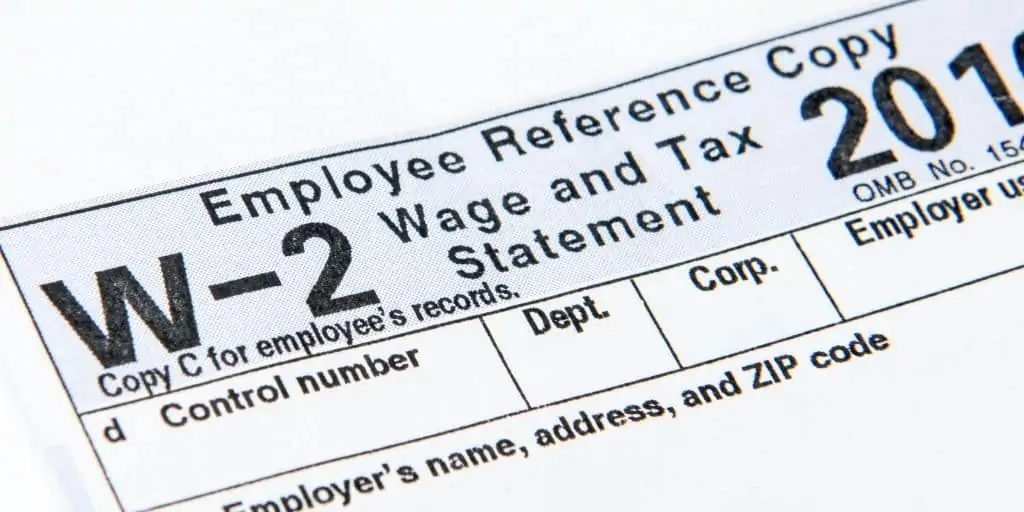What Is Owner Carry?
REtipster does not provide tax, investment, or financial advice. Always seek the help of a licensed financial professional before taking action.
Shortcuts
- Owner carry (also known as seller financing or owner financing) is a real estate agreement where the seller becomes the lender, often utilized when traditional mortgage financing isn’t an option for the buyer.
- Instead of going to a bank to finance a property purchase, the seller typically extends a line of credit to the borrower, who then must repay the seller over time (usually with interest).
- Owner carry can serve various purposes in real estate, including homeownership, investment properties, land investing, and business transactions.
- However, a buyer and a seller must be aware of the legal and financial aspects of owner carry, such as the restrictions placed by the Dodd-Frank Act.
- Seller financing can offer benefits such as easier qualification and flexible terms but also carries risks like buyer default and potential legal complications.
How Does Owner Carry Work?
An owner carry or seller financing works by the seller lending a buyer the funds needed to buy the seller’s property. In this financing method, the buyer agrees to make payments directly to the seller instead of taking out a mortgage from a traditional lender.
However, unlike a bank, the seller doesn’t directly lend money to the borrower in the form of cash. Instead, the financing involves a lending process where the seller extends credit to the buyer. Owner carry works by the two parties agreeing that the buyer repays the cost of the property over time.
There are many reasons why a buyer and seller agree to an owner carry. One is that a buyer can secure a property even with less-than-stellar credit. It can also provide a way for the buyer to build equity and repair their credit history[1].
Meanwhile, the seller may be able to sell their property more quickly or at a higher price.
Despite these benefits, it’s essential to understand the risks involved, including the potential for legal complications and financial burdens.
Structuring an Owner Carry Transaction
There are many ways to structure an owner carry transaction. However, no matter how the buyer and the seller agree to its terms, they must put everything in writing. This written agreement has all the important details of the deal.
There are three main ways to do this:
- Promissory Note and Mortgage or Deed of Trust. The buyer and seller agree on the details, such as how much money is being loaned, the interest rate, and when payments are due. The buyer gets the title for the property, which acts as security for the loan. If the buyer can’t make the payments, the seller can take the house back.
RELATED: How a Deed of Trust Closing Works (Seller Financing Tutorial)
- Contract for Deed (Land Contract). This is when the buyer makes payments to the seller, but they don’t officially own the house until they make the last payment[2]. Alternatively, they can get a loan from another lender and pay the seller the full amount to own the property.
RELATED: How a Land Contract Closing Works (Seller Financing Tutorial)
- Lease-Purchase Agreement. This arrangement is like renting-to-own[3]. The buyer pays rent and has the choice to buy the house for a set price at the end of the lease. If they decide to buy, their rent can go towards the purchase price. Otherwise, they can end the lease.
Note that many seller financing agreements contain a balloon payment after a set time has passed, sometimes in as little as five years. This can sometimes force buyers to refinance the mortgage into a traditional loan.
In addition, associated taxes and insurance aren’t usually part of the payments to the seller; the buyer must make those on their own[4].
Uses of Owner Carry in Real Estate
Owner carry can be a versatile tool in various real estate scenarios.
Homeownership
Owner carry can be a lifeline for individuals who struggle to secure traditional mortgage financing, such as those whose creditworthiness might have been impacted by recent financial trouble or those with unconventional income sources. Seller financing can help these individuals secure a home that might be unavailable or inaccessible based on their credit history.
Property Acquisition
Investors who seek to acquire rental properties may turn to owner carry as a financing option, especially if they have reached their limit with traditional lenders.
With this approach, an investor can acquire a property quickly (such as for a fix-and-flip) or use it as a rental property. They can then collect rental income to cover the payments to the seller and profit from any appreciation in the property’s value over time.
Some investors also use owner financing to defer capital gains taxes instead of paying them out all at once[5].
Land Investing
Owner carry can be particularly useful in land investing, where traditional financing can be difficult. One reason is that many traditional lenders tend to view land investing as fraught with risk, or they don’t understand the market at all.
As a result, they don’t lend to land investors as much as real estate investors flipping houses (or even if they do, they’ll attach outrageous interest rates, substantial down payment, or harsh terms to offset the risk)[6].
For example, a buyer interested in purchasing a plot of raw land may struggle to secure a mortgage from a traditional lender due to this perceived risk. However, a landowner eager to sell may be willing to carry the note, allowing the transaction to proceed.
Business Transactions
Owner carry is not limited to residential real estate. It can also be used in commercial transactions, like buying or selling a business, particularly in a buy-sell agreement[7].
For instance, if a business owner decides to retire and sell their business, they may offer owner financing to a buyer who otherwise couldn’t secure business loan financing.
Pros and Cons of Owner Carry
Depending on the terms outlined in the PA, an owner carry can be a win-win situation for many transactions. However, it’s best to know its inherent pros and cons.
Pros
For buyers, the primary advantage of owner carry is that it can be easier to qualify for than a traditional mortgage. This option can be particularly beneficial for individuals with a poor credit history, irregular or unconventional income, or those who have suffered some recent financial setback[8].
For example, a self-employed individual has a steady income but doesn’t have the W-2 forms that traditional lenders usually require. In that case, owner carry can provide an alternative route to homeownership.
On the other hand, owner carry can make a property more attractive to potential buyers, leading to a faster sale. Moreover, the seller can earn interest on the loan, potentially increasing the property’s total sale price and creating stable cash flow.
Cons
For buyers, while owner carry may be easier to qualify for, it can come with higher interest rates than traditional loans. Plus, if the owner carry agreement is not carefully crafted, the buyer may end up in a financially precarious situation.
In addition, if the seller has an active mortgage on their property, their mortgage terms might have a due-on-sale clause. This clause demands the full payment of the balance owed on the property as soon as it’s sold (which means to the buyer)[9]. When this happens, the seller might impose the burden on the buyer.
For sellers, there’s the risk of buyer default. If the buyer fails to make payments, the seller can end up in a protracted and potentially costly foreclosure process. Additionally, sellers won’t get all their money upfront, which can be a drawback if immediate funds are needed.
RELATED: How to Handle Loan Defaults? Debunking A Common Misconception About Seller Financing
Legal Aspects of Owner Carry
Given the unique nature of owner carry transactions, it’s essential to have a clear, legally binding document detailing the transaction’s repayment terms, the interest rate, and what happens if the buyer defaults.
Some states have specific laws and regulations about owner carry transactions, such as the Dodd-Frank Act.
The Dodd-Frank Act
The Dodd-Frank Wall Street Reform and Consumer Protection Act, more commonly known as the Dodd-Frank Act, was enacted in 2010 in response to the 2008 financial crisis. This legislation aimed to prevent a recurrence of the conditions that led to the recession by imposing significant regulatory changes on financial institutions.
Within this sweeping legislation, specific provisions affect owner carry transactions, particularly on how it changed the earlier Truth in Lending Act (TILA) or Regulation Z[10] of the Federal Reserve Board.
One is that sellers offering seller financing may be considered “mortgage loan originators” if they seller-finance more than three properties in 12 months, depending on the specific circumstances and legal jurisdiction. In some cases, the seller must be licensed as a mortgage loan originator and comply with various federal regulations, including verifying the borrower’s ability to repay the loan.
Another key provision of the Dodd-Frank Act limits balloon payments for certain owner carry transactions. While these payments were commonly used in owner carry transactions to limit the seller’s risk, the Dodd-Frank Act restricts their use by placing certain conditions and restrictions, which may vary depending on the loan’s structure and other factors.
Sources
- Leonard, K. (2017, July 25.) What Does Owner Carry Mean in Real Estate Terms? Week&. Retrieved from https://www.weekand.com/home-garden/article/owner-carry-mean-real-estate-terms-18047507.php
- Graham, K. (2023, March 3.) Land Contracts: What They Are And How They Work. Rocket Mortgage. Retrieved from https://www.rocketmortgage.com/learn/land-contract
- Lease Purchase Agreement. (n.d.) ContractsCounsel. Retrieved from https://www.contractscounsel.com/t/us/lease-purchase-agreement
- Treece, K., Cetera, M. (2023, March 1.) Owner Financing: What It Is And How It Works. Forbes Advisor. Retrieved from https://www.forbes.com/advisor/mortgages/owner-financing/
- Tiberio, S. (2022, March 31.) How To Use Owner Financing To Invest In Real Estate. WealthFit. Retrieved from https://wealthfit.com/articles/owner-financing/
- Wichter, Z. (2022, December 6.) What property buyers should know about land loans. Bankrate. Retrieved from https://www.bankrate.com/mortgages/what-property-buyers-should-know-about-land-loans/
- Puri, J. (2023, January 23.) What is a buy-sell agreement? Policy Advisor. Retrieved from https://www.policyadvisor.com/life-insurance/what-is-a-buy-sell-agreement/
- Paniello, A. (2022, June 30.) Seller Financing: Everything You Need To Know. MoneyTips. Retrieved from https://moneytips.com/seller-financing-everything-you-need-to-know/
- Folder, J. (2022, May 9.) The Pros and Cons of Owner Financing. Investopedia. Retrieved from https://www.investopedia.com/articles/personal-finance/082815/pros-and-cons-owner-financing.asp
- § 1026.43 Minimum standards for transactions secured by a dwelling. (2020, October 26.) 12 CFR 1026.43. United States Code of Federal Regulations. Retrieved from https://www.ecfr.gov/current/title-12/chapter-X/part-1026/subpart-E/section-1026.43










